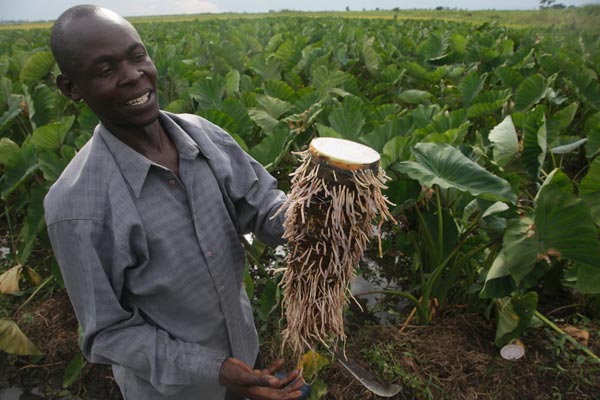Gregory Murithi discovered just how profitable arrowroot farming is, a little over three years ago. So good was the income he was raking in that he decided to do away with other crops, save for maize, beans and some vegetables.
In fact, he uprooted the flowerbed around his compound and replaced it with arrowroot, which he sells at Sh50 a kilo to the Imenti Community-Based Organisation (ICOBO) millers. Other farmers in the sub county also deliver their arrowroot to ICOBO, where various products are made, including crisps and flour for chapatti and porridge.
In a quarter-acre farm near his house, Murithi has planted 1,000 stems of arrowroot. He says each stem produces arrowroot weighing 2kg, which earns him Sh100. An adjacent parcel has 500 stems, while an additional one at one corner of the farm has another 1,000, assuring him of a tidy sum, with proper tending of the crop.
“To maximise on the space, I convinced my wife to uproot the flowerbed surrounding the house and planted 500 more stems,” Murithi says.
He says dividing the farm into segments was deliberate for the family to harvest all year round. “I can tell you without any fear of contradiction that there is no crop that can earn you more money than what you get from arrowroot. I don’t have to apply fertiliser because the only thing needed is proper weeding,” Murithi says. His wife, Judy and one worker helps him in the farm. He says arrowroot does not require a lot of water to grow, contrary to what most farmers believe.
“They plant theirs near streams, not knowing that a lot of water produces arrowroot with less meat than those planted in drier soils. Watering my plants twice, plus some rainfall, is sufficient for a good harvest,” Murithi says. The tubers should be planted 30cm apart and completely buried, 30cm deep, into the soil. For mulching, Murithi says he uses dry leaves and grass. He says compost manure produces tasty arrowroot.
“Arrowroot grown near rivers don’t do well because the running water washes away nutrients in the soil,” he says.
Murithi says he applies ash in the roots to neutralise alkalinity of the soil. He says he harvests after six months to get mature roots with the desired weight. Prematurely harvested arrowroot are watery and not tasty, Murithi says. ICOBO chairman Paul Kiambi said they are working with over 1,000 farmers who produce arrowroot used to make various food products at their factory.
“We decided to pursue value addition to put more money into farmers’ pockets. Apart from the flours, we also use the leaves to produce food flavours. The powder from the leaves is also medicinal,” he says. From proceeds of his crop, Murithi educates his children and fends for his family.








